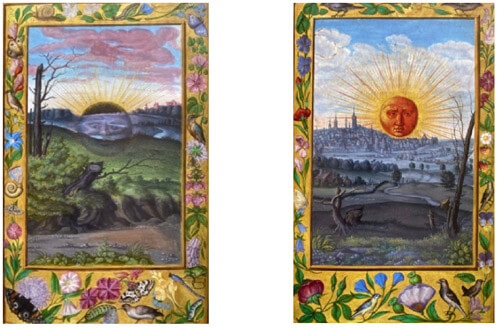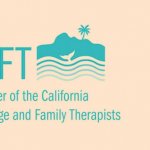
Interview with Murray Stein for Pacifica Graduate Institute
May, 2020
___________________________________________________________________________
On April 1, 2020, Dr. Murray Stein, internationally known Jungian analyst and author, was interviewed by Dr. Robert Henderson on the subject of the coronavirus (here). In the interest of exploring further the powerful images and ideas found in this seminal interview, Pacifica will offer a series of new interviews with Murray, designed to address the pandemic from a depth perspective. In this first interview, Murray will be interviewed by Dr. Pat Katsky, a Jungian analyst, Pacifica faculty member, and former Pacifica provost.
_____________________________________________________________________________
PK: In your interview with Robert Henderson, you describe the virus as offering us an experience of Umbra Mundi,“a ‘world shadow’ hovering over us and infecting our psychic lives.” You see it as spreading “over the globe like a solar eclipse,” and having the essential features of “invisibility, universality, and numinosity.” Have you had any further thoughts about the Umbra Mundi?
MS: You ask about Umbra Mundi. It is a shadow that has fallen over the entire world. Where does it come from? Why has it befallen us at this moment in human history? These are important questions to consider.
The Umbra Mundicasts a pall of uncertainty over our easy assumptions. We thought of the future as an extension of the recent past, and now suddenly there is doubt, anxiety, fear of the dark that has descended and surrounded us. The future is obscured. We were in the daylight, as it seemed, and now it’s dark and the way ahead is overshadowed. This is the global condition in this time. It’s not personal, it’s collective, it’s everywhere. The shadow falls equally on everybody. There is no hiding place, even in religion. The churches and holy sites are in lock down.
We can’t say, though, that theology hasn’t prepared us for this. Biblical testaments and many religions speak of times like this in the lives of individuals and collectives. We also know of the nigredostage in alchemy, which shows images of black crows, corpses, the eclipse. The black sun of alchemy, of which Jung writes in his late works, is an equivalent of Umbra Mundi: “… there is a Sol niger, a black sun, which coincides with the nigredoand putrefactio, the state of death” (CW14, par. 113). And of course, many mythologies speak of such states of consciousness. What is remarkable about this present time is that it is universal. It really is an Umbra Mundi. It is not a local phenomenon, a personal mood or a passing feeling. It is an objective reality. We are in darkness, globally.
We ask: Why now? What does this mean? It is more than just a “pause” in the frenetic pace that preceded. It is a forced “full stop.” We must sit in the dark for a while until our eyes adjust to the new condition we are in. I would not want to say what will come out of this or what we will see in this darkness that makes a difference for the future. Mostly this is a time to practice “wu wei”wait and see what comes. This is how we meet the unconscious. What will emerge from the darkness of our minds in this time of Umbra Mundi? Dreams, images, thoughts—welcome them and work with them.
In the dark you do not know the way forward. You can only take the next and most necessary step, one at a time, as Jung wisely counsels. I think of Dante in the dark wood. Then Virgil appears, and they begin their journey. “Abandon hope all who enter here,” reads the sign over the gateway to the Inferno, and bravely they enter that unknown and forbidding region of the psyche.
This is the condition of the world. We are in the dark woods and uncertainty has infected all. Perhaps a Virgil will appear to accompany us through this night. We have a lot to learn in the Umbra Mundi.
PK: You suggest that “its archetypal nature might be considered to be ‘the dark side of God.’” Using these ideas, it seems that we are collectively entering into an engagement with the dark side of the transpersonal dimension of the Self. For those of us in the West, finding our way forward may require us to address in new ways the long-standing one-sidedness of Western deity images. By contrast, some Hindu deities, such as Shiva and Kali, include in themselves deep opposites of generativity and destruction, as do other deity images present in spiritual traditions found in cultures around the world. And some Eastern spiritual traditions don’t rest at all on direct images of divinity. I wonder how these background spiritual approaches may affect the character of our deep engagement in this moment as the dark side of the Self presents itself globally.
MS: From Christianity we have inherited a rather one-sided God image, one of pure love and light. As you know, Jung objected to the doctrine of evil as privatio boni(evil as the absence of good) and saw evil as a potent force in its own right but at the same time contained within an unio oppositorum, a complex unity. His concept was a more inclusive God image that would contain light and dark, good and evil, within a single Godhead. So Umbra Mundi is an aspect of Unus Mundus(Unity), as is Anima Mundi.
In Jungian psychology we speak of the Self as an unio oppositorum. Jung was adamant on this point. The reason is clear: Human beings are complex and have a shadow, and the shadow is grounded in the Self, that is in our nature. No one can work in psychology for any length of time without experiencing this feature of the personality, either in projection and transference or in fantasies and dreams. And our biblical religion teaches us that we are made in the image of God (imago Dei), so this means that the God image also has a shadow. In biblical theology this is called Satan or the Devil. Human beings and God mirror one another according to this doctrine. The Umbra Mundiis the shadow side of God (i.e., Unus Mundus) which is now manifest in the world.
The question is: What does this mean? Why are we being given this “revelation” (if I may use that word) at this specific time in our history as a human species? I think we have to take this pandemic as a revelation, and therefore, it must have meaning. It is incumbent on us to interpret this phenomenon or it will not help us to avoid an even more grievous future.
PK: Exploring the possibility of shifts in Western deity images brings to mind two images from the medieval alchemical text the Splendor Solis,images that suggest an awareness beyond duality. They are Image 19, The Darkness of the Putrified Sun, and Image 22, The Red Sun. Does it seem to you that these images might offer glimpses of an experience of consciousness that holds Anima Mundi and Umbra Mundiin more shared awareness?

MS: Awareness beyond duality would certainly have to embrace the opposites, dark and light. These images from alchemy suggest such a state of mind. The dark sun is a symbol of energy in regression, in decline; the red sun is energy in progression, streaming brilliantly outward. This is a rhythm. And we must tune in to these energy rhythms. The ancient Egyptians knew of this as the journey of the sun across the sky in the day and through the dark underworld at night. The dangers of the night sea journey are recorded in detail in the tomb paintings. The Amduat, the funerary text that our colleague Andreas Schweizer has commented on so beautifully in his book,The Sungod’s Journey Through the Netherworld, spells out what happens at each of the hours of the journey through the underworld. We can learn from texts like the Amduatwhat must be faced in the Umbra Mundi and how to make this passage to a new day. This rhythm is fundamental to the Unus Mundus, and it will repeat itself to the end of time.
Many people are asking what will the future be like after this dark period of the pandemic is past. Will the revelation of Umbra Mundichange the attitude of humans significantly on a global scale? Is this a beginning of transformation of consciousness? Almost everyone I speak to or read agrees that there will be “new normal.” But what will that be? One would hope that it would feature a clearer understanding of our limits as a human species on this planet and a greater sense of our interconnectedness with other species and with nature. We are one substance—human beings, other species, nature, cosmos, God. The whole is made up of interconnected pieces, and everything is in a dynamic relation to everything else. This one substance is energy, fundamentally, as we have learned from quantum physics, and the energy of the sun is the source of life energy on this earth. The sun itself is a piece of the cosmos, which is made up of energy fluctuations. Humans are not in charge of how the energy is distributed and directed. We have learned this once again from coronavirus. The whole has its own way of regulating the parts, and in this moment humans are begin regulated by a power that is greater than our total and combined will.
PK: The image of the abduction of Persephone from Greek mythology comes to mind— for many of us it feels as though we have been abducted out of our previous life and plunged into this new dark reality.
MS: That’s a good metaphor for this sudden, unwanted and unexpected, and rather brutal enantiodromia. From innocent maidenhood to the silence of the underworld in such a short period of time—yes, it’s a shock. But we have to remember that Persephone was transformed by this descent into darkness, into the Queen of the Underworld. She adapted. Her eyes had to adjust to the dark in order to function in her new situation.
PK: Do you imagine that a transcendent third might emerge into our awareness if we can hold the tension between the archetypal energy fields of Anima Mundi and Umbra Mundi?
MS: This is what we learned from Jung. By holding the tension of the opposites—in this case the threatening darkness of the Umbra Mundiand the life-giving light of Anima Mundi—a “third” will appear. I think we can do this if we stay close to our dreams. A new synthesis of the opposites will emerge that blends their features but also transcends their limits. We should be on the lookout for symbols. The symbols will appear to individuals and probably also to the collective mind. The crucial thing is to live with these symbols correctly. They offer hope and the beginning of understanding.
Murray Stein is a graduate of Yale University (B.A. 1965), Yale Divinity School (M.Div. 1969), and the University of Chicago (Ph.D. 1985). He received his Diploma in Analytical Psychology from the C. G. Jung Institute in Zurich in 1973. He had a private practice in Wilmette, Illinois from 1980 to 2003 and was a training analyst with the C. G. Jung Institute of Chicago. Since 2003, he has lived in Switzerland and is a Training and Supervising Analyst with the International School of Analytical Psychology/Zurich. He currently has a private practice in Zurich, Switzerland. He is a founding member of the Inter-Regional Society of Jungian Analysts and the Chicago Society of Jungian Analysts, and he was the first president of the Chicago Society of Jungian Analysts (1980–1985). He is a former president of the International Association for Analytical Psychology (2001–2004) and a former president of ISAP Zurich (2008-2012), and has presented at Pacifica Graduate Institute programs. He is the author of In MidLife, Jung’s Treatment of Christianity, Transformation: Emergence of the Self, Jung’s Map of the Soul, Minding the Self, The Bible as Dream and other books, and he is the editor of Jungian Psychoanalysis.
Pat Katsky is a graduate of UC Berkeley (B.A.) and UCLA (M.A. and Ph.D.). She was trained as a Jungian analyst at the Los Angeles Jung Institute and certified in 1991. She has maintained a private practice as an analyst since then. She was president of the Los Angeles Jung Institute (1997-1999) and serves regularly on the reviewing and certifying boards of the San Francisco and Los Angeles Jung Institutes. She has been a core faculty member at Pacifica Graduate Institute for 20 years. She is currently a core faculty member in the Ph.D. program in Depth Psychology specializing in Integrative Therapy and Healing Practices, and sits on the management council for the institute. She was formerly provost and the chair of the institute’s Depth Psychotherapy Ph.D. program. Her research interests include the religious function of the psyche, the process of becoming a psychotherapist, and the world of dreams. She has published and lectured on these topics in the United States and abroad. In 1976, she co-founded a non-profit counseling center in Los Angeles, Counseling West, which serves individuals, couples, and families seeking a depth psychotherapeutic approach in charting a path in their lives. She continues to participate as a member of the center’s board of directors.




